 The comic book Watchmen, penned by Alan Moore and drawn by artist Dave Gibbons, is one of the most revered books in DC Comics’ nearly century-spanning catalogue. However, their treatment of the work’s creators has always been more than a little murky. Many people both within and outside the industry know that DC’s relationship with Moore […]
The comic book Watchmen, penned by Alan Moore and drawn by artist Dave Gibbons, is one of the most revered books in DC Comics’ nearly century-spanning catalogue. However, their treatment of the work’s creators has always been more than a little murky. Many people both within and outside the industry know that DC’s relationship with Moore […]
Viewing: Blog Posts Tagged with: controversy, Most Recent at Top [Help]
Results 1 - 25 of 68
Blog: PW -The Beat (Login to Add to MyJacketFlap)
JacketFlap tags: DC, Controversy, rebirth, watchmen, Alan Moore, DC Comics, dave gibbons, Zack Snyder, before watchmen, Add a tag
Blog: PW -The Beat (Login to Add to MyJacketFlap)
JacketFlap tags: Bob Kane, DC, NYC, Controversy, Batman, Bill Finger, DC Comics, Marc Tyler Nobleman, Top News, Bill the Boy Wonder, Add a tag
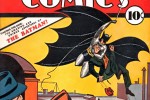 For decades, Bob Kane was the only person credited for the creation of the Batman. However, as Nobleman argued at 92Y, Bill Finger was the man who did most of the work.
For decades, Bob Kane was the only person credited for the creation of the Batman. However, as Nobleman argued at 92Y, Bill Finger was the man who did most of the work.
Blog: PW -The Beat (Login to Add to MyJacketFlap)
JacketFlap tags: Podcorn, Double Shipping, marketing, podcast, Marvel, Sales, Podcasts, Controversy, Batman, Recession, DC Comics, Harley Quinn, Top News, Scott Snyder, Greg Capullo, Add a tag
 Every Wednesday, I talk about comics with Brandon Montclare, writer of the hit Image series Rocket Girl and co-writer of Marvel’s Moon Girl and Devil Dinosaur series. We gab about what we’re reading now, what books we consider classics (Brandon loves Dark Knight Strikes Again…), and the hottest gossip of the industry. Occasionally, the inimitable artist Amy Reeder (Rocket Girl, Batwoman) stops by. Check out our full […]
Every Wednesday, I talk about comics with Brandon Montclare, writer of the hit Image series Rocket Girl and co-writer of Marvel’s Moon Girl and Devil Dinosaur series. We gab about what we’re reading now, what books we consider classics (Brandon loves Dark Knight Strikes Again…), and the hottest gossip of the industry. Occasionally, the inimitable artist Amy Reeder (Rocket Girl, Batwoman) stops by. Check out our full […]
Blog: PW -The Beat (Login to Add to MyJacketFlap)
JacketFlap tags: Marvel, Controversy, Relaunch, hip hop, Top News, variants, #Marvel, All-New All-Different, Add a tag
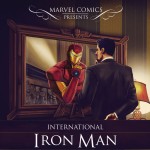 Marvel Comics’ All-New All-Different relaunch is off to a rousing success, with their new series #1s debuting at enormous sales levels thanks in no small part to the presence of variants, including the Hip Hop covers that mashup heroes like Ant-Man with classic album covers such as that of Notorious BIG’s Ready to Die. To celebrate […]
Marvel Comics’ All-New All-Different relaunch is off to a rousing success, with their new series #1s debuting at enormous sales levels thanks in no small part to the presence of variants, including the Hip Hop covers that mashup heroes like Ant-Man with classic album covers such as that of Notorious BIG’s Ready to Die. To celebrate […]
Blog: PW -The Beat (Login to Add to MyJacketFlap)
JacketFlap tags: Movies, Pulp Fiction, Controversy, Top News, Quentin Tarantino, Controversy!, Hateful Eight, Add a tag
In his first public conversation since making comments at an October 24th protest that has sparked a national police boycott of his films, including the upcoming HATEFUL EIGHT, Quentin Tarantino takes aim at his critics.
Blog: PW -The Beat (Login to Add to MyJacketFlap)
JacketFlap tags: Heidi MacDonald, Scott Allie, Controversy!, Podcorn, Emma Houxbois, Hannah Means-Shannon, podcast, Comics, Podcasts, Controversy, journalism, Top News, Add a tag
Brandon and Alex have a frank discussion about the state of comics journalism.
Blog: PW -The Beat (Login to Add to MyJacketFlap)
JacketFlap tags: Movies, Commentary, Controversy, trolls, Top News, star wars VII, the force awakens, #BoycottStarWarsVII, Add a tag
Why #BoycottStarWarsVII is a lie
Blog: PW -The Beat (Login to Add to MyJacketFlap)
JacketFlap tags: Interviews, Archie, Controversy, Matt Fraction, jughead, Top News, Harvey Awards, sex criminals, chip zdarsky, erica henderson, Add a tag
Calling all miscreants! All slackers and gamers! All those who would banish terrible cafeteria food to the secret tenth circle of hell (located in a specific unmentionable location on Satan’s person). Archie’s Jughead is back with a new ongoing series written by none other than Sex Criminals’ Chip Zdarsky and illustrated by The Unbeatable Squirrel Girl‘s artist Erica Henderson. […]
Blog: PW -The Beat (Login to Add to MyJacketFlap)
JacketFlap tags: kickstarter, Top News, Crowdfunding, jon goldwater, #newriverdale, Archie, Controversy, Add a tag
I’d been hearing word on the street that the controversial Archie Kickstarter campaign would be cancelled, and now about $30 K in andCBR has the official word. The planned titles—Jughead by Chip Zdarsky, Betty & Veronica by Adam Hughes and Kevin Keller by Dan Parent—will be published, as promised, but the rollout will be slower with Jughead launching in the fall.
According to Archie publisher Jon Goldwater, the negative attention was detracting too much from the actual projects:
“Very broadly, Jughead will come first, sooner than you’d think,” Archie Comics Publisher and CEO Jon Goldwater told CBR News. “Probably October. Then we’ll take a pause, figure out the rollout of the other two and how to best position them in the market. It’s going to take longer than we’d hoped, obviously, but these titles are top priority for us, and we want to make sure our fans get the best books possible.”
The decision to pull the Kickstarter, Goldwater said, came after the conversation no longer became about the books themselves — “Jughead,” to be written by Chip Zdarsky and illustrated by an artist to be named; “Betty and Veronica,” written and drawn by Adam Hughes; and “Life with Kevin,” written and penciled by Kevin Keller creator and Archie veteran Dan Parent and inked by J. Bone — but about the Kickstarter itself.
The Beat’s retail columnist Brandon Schatz had a detailed post on what he saw as the problems with the crowd funding effort last night.
The big problem Archie Comics is running into involves warring ideas. As a self-sufficient publishing company, they have certain contracts and financial details that they need to keep confidential. However, they are taking a step out of the “self-sufficient” bounds by asking for money – which demands that the math be shown. It might be a popsicle stick solution to a unique problem, but they are doing a poor job in convincing me that it can support the weight.
Don’t get me wrong: Archie as a company isn’t saying anything wrong. They are building a compelling narrative around this Kickstarter that I can get behind. They aren’t Marvel and DC. They don’t have parent companies, and so while they might be big, they’re still relatively small. This affords them the opportunity to move and change with greater ease, but such freedom also comes with a lack of safety net, so to speak. Opportunities arose, and tied up some funds. It happens. What’s losing me are the actions that have surrounded this launch, as well as the product currently being offered with the Kickstarter.
Other publisher Kickstarters—from Fantagraphics and Last Gasp—have been successful, but the grassroots effort seemed more appropriately placed than this one. Although the projects being funded—contrary to what everyone seems to think—were NOT going to be sold in Wal-Mart and Target, just putting the names of those chains in the same paragraph as “crowdfunding” raised an incongruous picture. Although this was a bump in the road for Archie they’ve definitely done the right thing by pulling the plug.
Archie released a statement to CBR on the effort:
We will be ending the Archie Kickstarter today.
We launched the “New Riverdale” Kickstarter as a unique and innovative way to celebrate the company’s upcoming 75th anniversary and to bring attention to some new titles that we are extremely excited about — “Jughead” by Chip Zdarsky, “Betty and Veronica” by Adam Hughes and “Life with Kevin” by Dan Parent and J. Bone. We decided to dive into crowdfunding as an energetic, interactive and different method to raise money to help expedite the launch of these titles. The chance to engage with our fans directly was really appealing to us, and we’re extremely grateful and honored by the support and pledges we’ve received.
While the response to these new titles has been amazing, the reaction to an established brand like Archie crowdfunding has not been. Though we saw this as an innovative, progressive and “outside-the-box” way to fund the accelerated schedule we wanted to produce these books, it became another conversation, leading us further away from the purpose of this whole campaign: to get these amazing books in the hands of fans faster than we could on our own. While we fully expected our goal to be funded, it was no longer about the books and how amazing they will be. We don’t want that. This is why we’re shutting the Kickstarter down today.
We don’t regret trying something new. It’s what Archie’s been about for the last six years. We will continue to be a fearless, risk-taking and vibrant brand that will do its best to embrace new platforms, technology and ways to interact with fans. As a company, we have always prided ourselves on pushing boundaries and challenging expectations and perceptions.
The wonderful New Riverdale titles we wanted to launch will still come out — albeit not as quickly as we would have hoped had we attained the funding via Kickstarter. We believe in these books and know they’ll find an audience in comic shops, fueled by great stories and amazing creators.
We’d like to thank the great team at Kickstarter for their guidance and feedback and the entire staff at Archie Comics for their endless hours of hard work and dedication to this very special initiative.
And, most importantly, to our fans that pledged money to this Kickstarter — we thank you. Your dedication, love of Archie and his friends and endless positivity are examples to all. We will be in contact shortly via Kickstarter to get a special thank-you gift in your hands as soon as possible. Your support means the world to us.
Blog: PW -The Beat (Login to Add to MyJacketFlap)
JacketFlap tags: Awards, Graphic Novels, Politics, Controversy, roz chast, Richard McGuire, Top News, this one summer, charlie hebdo, winston rowntree, Add a tag
Graphic novels have a lot more prizes than they once did, including literary awards that help validate the medium. Awards season is well upon us, and I’ve been way behind in noting some of the most important.
§ This One Summer by Mariko Tamaki and Jillian Tamaki continued to barnstorm all the honors by winning the Lynd Ward Graphic Novel Prize, perhaps th emost prestigious stand-alone comics prize in the US. The jury cited the book thusly
“This One Summer,” says the jury, “is a beautifully drawn, keenly observed story. It is told with a fluid line and a sensitive eye to the emblematic moments that convey character, time, and place—the surf at night, the sound of flip-flops, a guarded sigh—all at the meandering pace of a summer’s vacation. The Tamakis astutely orchestrate the formal complexities of the graphic novel in the service of an evocative, immersive story. At first blush a coming of age story centered on two young girls, the book belongs equally to all its cast of characters, any of whom feel realized enough to have supported a narrative in their own right. Striking, relatable, and poignant, this graphic novel lingers with readers long after their eyes have left the pages.”
Richard McGuire’s Here was named an Honoree:
Of “Here” the jury says, “Making literal the idiom ‘if these walls could talk…’ McGuire’s ‘Here’ curates the long history of events transpiring in one location. Through the subtle transposition of objects and individuals in a room, the book teaches us that space is defined over time. … Evoking our longing for place, the book performs this cumulative effect for the reader, by layering people, experiences, and events in the context of a single environment.”
The Prize is presented by Penn State and is named after the author of what are now accepted to be early example of standalone graphic novels. (Ward donated his papers to the university.) This year’s jury consisted of Joel D. Priddy, Veronica Hicks, Brandon Hyde, Brent Book and Jonathan E. Abel. MOre information on the prize, the jury and past winners can be found here.
§ The Cartoonist Studio Prize, presented by Slate Magazine and the Center for Cartoon Studies, was also presented a while back. And the graphic novel winners Here by Richard McCguire. (Do you sense a pattern here?) The webcomic prize was won by Winston Rowntree for Watching. The prize comes with a $1000 cash award for each. This year’s jury consisted of Slate Book Review editor Dan Kois; CCS fellow Sophie Yanow; and guest judge, cartoonist Paul Karasik. You can see all the runners up in the above link.
(This result has been sitting in my links for a month; apologies and congratulations to the winners.)
§ While This One Summer and Here have scooped up a bunch of prizes, you must be wondering about the third most honored graphic novel of 2014, Roz Chast’s Can’t We Talk About Something More Pleasant. Well, Chast won the Heinz Award, which is present to six “exceptional Americans, for their creativity and determination in finding solutions to critical issues.” Along with glory, the prize includes $250,000 in cash.
” ‘Floored’ does not begin to describe it,” Chast says of her reaction. “I don’t think I’ve fully absorbed it yet.”

§ As you may have heard, the PEN American Center, a literary organization that promotes free speech, presented French satirical magazine Charlie Hebdo with the PEN/Toni and James C. Goodale Freedom of Expression Courage Award, and all hell broke loose. Many prominent authors protested the award on the grounds that Charlie Hebdo is offensive. You can read many of those comments here. Other authors, including Neil Gaiman, Art Spiegelman, Alison Bechdel and Salmon Rushdie filled the tables at the awards gala vacated by the protesters, and defended Charlie Hebdo as an equal opportunity satirist. You can read all about that here.
While no one in the kerfuffle seems to think that being offensive deserves death, the dissenters felt that giving Charlie Hebdo an award intensified “the anti-Islamic,
anti-Maghreb, anti-Arab sentiments already prevalent in the Western world.”
The pro-Charlie group felt that, as Gaiman put it, “The Charlie Hebdo cartoonists are getting an award for courage. They continued putting out their magazine after the offices were firebombed [in 2011], and the survivors have continued following the murders.”
There aren’t any easy answers here. Terrorists acts are committed to create terror and confusion and turn ordinary people on both sides into radicals. In this goal, at least, the Hebdo attacks were a rousing success.
In the above photo Charlie Hebdo Editor-in-Chief Gerard Biard accepts the award as Alain Mabanckou looks on. AP photo by Beowulf Sheehan
Blog: PW -The Beat (Login to Add to MyJacketFlap)
JacketFlap tags: DC, Controversy, Batgirl, Cameron Stewart, Top News, Rafael Albuquerque, Add a tag
So, June is Joker month in the DCU, with variant covers for all the books featuring the lovable scamp once portrayed by Cesar Romero.
And last Friday, the variant cover for Batgirl #41 was revealed, by artist Rafael Albuquerque.
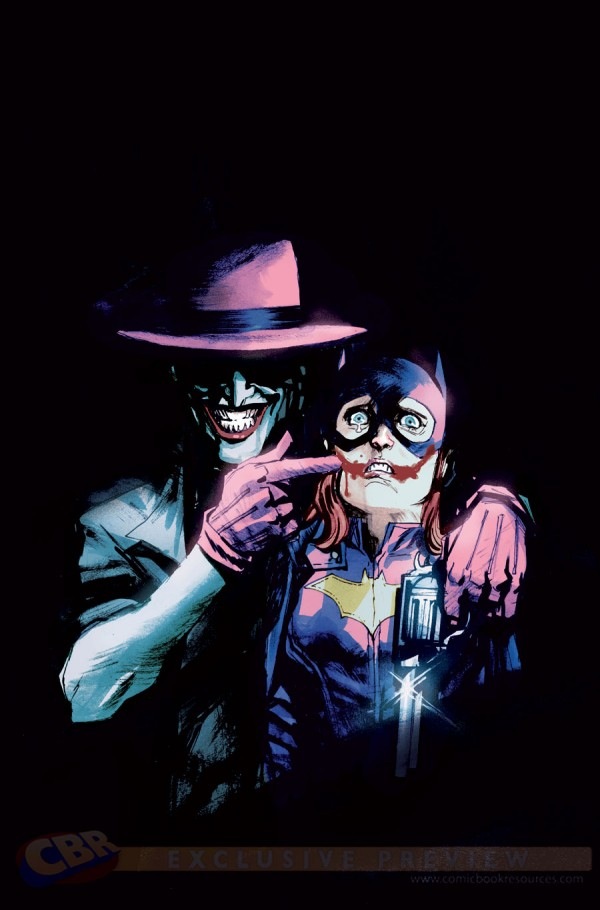
The image is a call-out to The Killing Joke, the story by Alan Moore and Brian Bolland where the Joker kidnaps Barbara Gordon, strips her, shoots her through the spine, paralyzing her, and send pictures to Batman and Jim Gordon to make them feel bad.
It’s a powerful story, but also very much of its time in that superhero comics were just proving how dark, grim, gritty and painful they could be. And Barbara Gordon paid the price.
Now, however, she’s the chipper star of a cheerful superhero book, written by Cameron Stewart and Brendan Fletcher and dawn by Babs Tarr, and the book has become the flagship title for a new kind of DC. A new, more inclusive DC.
And on those ground alone, the cover was rather inappropriate. As an image of the star of the book being physically and psychologically assaulted, it was even more disturbing. It’s a tribute to Albuquerque’s talent that the image clearly captures Batgirl’s fear and terror at the hands of the Joker.
Over the weekend, there was great objection. I had already started a round-up post with this storify and DC Women Kicking Ass teeing off.
And things got even more out of hand today with the #changethecover hashtag going up against the #dontchangethecover and all manner of really inane insults, threats and misunderstandings going out. It was less amusing and more heated than the Spider-Woman cover, even, because at the end of the day, a woman being brutalized (possibly sexually) is way more disturbing than a sexy ass.
But in the evening, East Coast time, Albuquerque stepped up and said he had requested the cover be pulled in a statement to CBR:
My Batgirl variant cover artwork was designed to pay homage to a comic that I really admire, and I know is a favorite of many readers. ‘The Killing Joke’ is part of Batgirl’s canon and artistically, I couldn’t avoid portraying the traumatic relationship between Barbara Gordon and the Joker.
For me, it was just a creepy cover that brought up something from the character’s past that I was able to interpret artistically. But it has become clear, that for others, it touched a very important nerve. I respect these opinions and, despite whether the discussion is right or wrong, no opinion should be discredited.
My intention was never to hurt or upset anyone through my art. For that reason, I have recommended to DC that the variant cover be pulled. I’m incredibly pleased that DC Comics is listening to my concerns and will not be publishing the cover art in June as previously announced.
With all due respect,
Rafa
DC Entertainment also released a statement
We publish comic books about the greatest heroes in the world, and the most evil villains imaginable. The Joker variant covers for June are in recognition of the 75th anniversary of the Joker.
Regardless if fans like Rafael Albuquerque’s homage to Alan Moore’s THE KILLING JOKE graphic novel from 25 years ago, or find it inconsistent with the current tonality of the Batgirl books – threats of violence and harassment are wrong and have no place in comics or society.
We stand by our creative talent, and per Rafael’s request, DC Comics will not publish the Batgirl variant. – DC Entertainment
NOW, a few things about that. As laid out by Jude Terror, DC’s statement was incredibly badly worded and made it sound like Albuquerque had been threatened, when in fact PEOPLE OPPOSING THE COVER HAD BEEN THREATENED.
Series writer Cameron Stewart and Albuquerque made it clear on Twitter that Albuquerque had not received any threats.
Something to clarify, because DCs statement was a little unclear. @rafaalbuquerque did not get threats. People OBJECTING to the cover did.
— Cameron Stewart (@cameronMstewart) March 17, 2015
Ill talk more about it tomorrow but I was never threatened. just to make it clear.
— Rafael Abuquerque (@rafaalbuquerque) March 17, 2015
However, it also became VERY CLEAR, that the Batgirl creative team themselves had raised objections to the cover from the start. (Variant covers are produced outside the editorial department.) And Stewart was very clear about this on Twitter. There were a gazilliion tweets about this, the below is just a selection.
If you’re concerned about artistic integrity and creative vision – that’s what we’re doing. Keeping the integrity of our book intact.
— Cameron Stewart (@cameronMstewart) March 17, 2015
@cameronMstewart So you're basically saying that the cover being removed keeps your book's integrity more than if it was available?
— Macattack (@macattack50) March 17, 2015
@macattack50 given that it wasn’t approved by us and contradicts the work we’re doing, yes.
— Cameron Stewart (@cameronMstewart) March 17, 2015
@cameronMstewart I don't agree, but to each his own. I thought it was an evocative cover that depicted Joker at his most terrifying.
— Macattack (@macattack50) March 17, 2015
@macattack50 I’m the writer of the comic. I don’t want it on my book. Defend my vision and integrity, please.
— Cameron Stewart (@cameronMstewart) March 17, 2015
@Akylle it’s not censorship. We the creative team never wanted it.
— Cameron Stewart (@cameronMstewart) March 17, 2015
@GamingAndPandas no, I didn’t. I objected to that cover before there was any backlash.
— Cameron Stewart (@cameronMstewart) March 17, 2015
I stand behind Rafael as an artist and a friend, and think he made the right decision.
— Cameron Stewart (@cameronMstewart) March 17, 2015
@cameronMstewart Nothing can disturb anyone anymore ever.
— Josh Crews (@JoshCrewsReally) March 17, 2015
@JoshCrewsReally we don’t want our book to be “disturbing.”
— Cameron Stewart (@cameronMstewart) March 17, 2015
@cameronMstewart That's the thing though. One variant cover doesn't make your book disturbing. No more than one Lego cover makes it silly.
— Josh Crews (@JoshCrewsReally) March 17, 2015
@JoshCrewsReally @cameronMstewart A cover, variant or no, represents the book to someone who picks it up (that's what they're for!).
— Matthew Southworth (@mattsouthworth) March 17, 2015
@cameronMstewart So you think every variant cover reflects the book? This would be awfully hard to reconcile with variants already existing.
— Josh Crews (@JoshCrewsReally) March 17, 2015
@JoshCrewsReally @cameronMstewart A cover, variant or no, represents the book to someone who picks it up (that's what they're for!).
— Matthew Southworth (@mattsouthworth) March 17, 2015
@mattsouthworth @cameronMstewart You do realize how many variants areout there that don't represent the book in the least though, right?
— Josh Crews (@JoshCrewsReally) March 17, 2015
@JoshCrewsReally @mattsouthworth @cameronMstewart This is representing their book in a way they do not want. It offends fans. Respect that.
— Kates (@KatieScarlett94) March 17, 2015
@KatieScarlett94 @JoshCrewsReally @mattsouthworth @cameronMstewart 2 cents: I didn't agree with pulling it but the 'defenders' were monsters
— random-shane (@mprshane) March 17, 2015
@mprshane @KatieScarlett94 @mattsouthworth @cameronMstewart Agreed. I was never out there defending it myself. Just asking questions now.
— Josh Crews (@JoshCrewsReally) March 17, 2015
@cameronMstewart I don't blame you. I just wish the process could've allowed for it to be stopped sooner? Idk if that makes any sense.
— Josh Crews (@JoshCrewsReally) March 17, 2015
@JoshCrewsReally oh, believe me, so do we
— Cameron Stewart (@cameronMstewart) March 17, 2015
@JoshCrewsReally @mprshane @KatieScarlett94 @mattsouthworth It is so important to understand that we didn’t want this cover though.
— Cameron Stewart (@cameronMstewart) March 17, 2015
Draw whatever the hell you want, but when they're not your characters expect the owners to protect their brand from losing $$.
— Pia Guerra (@PiaGuerra) March 17, 2015
@PiaGuerra Anybody who hopes to work for DC and doesn’t think people will be telling ‘em what they can and can’t draw are in for a shock.
— Kurt Busiek (@KurtBusiek) March 17, 2015
@cameronMstewart No, but he lost his JOB, and earnings.
— David O'Neill (@davejone) March 17, 2015
@davejone I can assure you he didn’t.
— Cameron Stewart (@cameronMstewart) March 17, 2015
um killing joke is a classic story of a clown who paralyzes a woman and takes all her clothes off to take pictures of her to show her father
— Chip Zdarsky, ok. (@zdarsky) March 17, 2015
Props to @cameronMstewart @babsdraws @brendenfletcher for sticking to their guns in the face of much outcry and twitter rage!
— Fiona Staples (@fionastaples) March 17, 2015
@cameronMstewart Nothing can disturb anyone anymore ever.
— Josh Crews (@JoshCrewsReally) March 17, 2015
@cameronMstewart You are correct about that. Everyone saw it. But now no one will get to own it.
— Macattack (@macattack50) March 17, 2015
I suggest all of you "Killing Joke" fans enjoy it like you enjoy Hall & Oates. Alone in your car.
— Henry Barajas (@HenryBarajas) March 17, 2015
Don't get put off by arguments over depictions/tone in comics lately. This means our industry is getting HEALTHY. GROWING!
— Jeff Parker (@jeffparker) March 17, 2015
https://twitter.com/andykhouri/status/577694801417498624
https://twitter.com/andykhouri/status/577695578009706496
I have a few observations about this:
• This isn’t censorship; it’s reversing a bad marketing decision that should never have been made. Why was it a bad marketing decision? Because Batgirl is the standard bearer for a new view of DC and its characters. I wasn’t kidding about Cesar Romero. Before there was all this psycho sadism, face removal, fear of a homosexual relationship between Batman and the Joker, Heath Ledger in a dress and so on, The Joker was a character who used joy buzzers and exploding cigars as weapons, and tried to take over Gotham with a flying saucer.
• The point is, when character run as long as Batman and the Joker and Batgirl have, their portrayal changes to reflect the times. The Killing Joke is a good old story from another era. I know we all like all backs and tributes and homages, but this one was not the right image for a new initiative at a publishing company.
• To the people saying they aren’t going to read DC Comics any more…pandering to the base hasn’t worked for comics for a long time.
• If you really love that cover, download a high res jpeg and make yourself a handy little print of it for you own use in your own home. No one will tell on you.
• The abusive nature of the internet is a blight on our society.
Meanwhile, this may be the truest thing that was said about the whole thing:
Batgirl is the most challenging thing I’ve ever worked on, and not because of the art or story
— Cameron Stewart (@cameronMstewart) March 17, 2015
Blog: PW -The Beat (Login to Add to MyJacketFlap)
JacketFlap tags: Interview, podcast, Interviews, Comics, Cartoonists, Blogosphere, Controversy, Mike Dawson, Indie Comics, Top News, Tumbling Tumblr Blogs, more to come podcast, Add a tag
 Recorded at Publishers Weekly, it’s More To Come, the weekly podcast of comics news, interviews and discussion with Calvin Reid, Kate Fitzsimons and The Beat’s own Heidi MacDonald.
Recorded at Publishers Weekly, it’s More To Come, the weekly podcast of comics news, interviews and discussion with Calvin Reid, Kate Fitzsimons and The Beat’s own Heidi MacDonald.
In this week’s podcast Heidi interviews comics creator, Tumblr personality and podcaster Mike Dawson, creator of Freddie & Me and Troop 142 about his trials as a mid-career creator, his recent Tumblr musings on the subject and the unexpected comics blogosphere notoriety that followed.
Download this episode direct here, listen to it in streaming here and catch up with our previous podcasts on the Publishers Weekly website, or subscribe to More To Come on iTunes
Blog: PW -The Beat (Login to Add to MyJacketFlap)
JacketFlap tags: Comics, DC, Conventions, Business News, Podcasts and other media, Podcasts, Controversy, Comic Books, Hugo Awards, penny arcade, DC Comics, PAX, Mark Waid, Big Two Comics, Top News, J.H. Williams III, more to come podcast, Batwoman, W. Haden Blackman, best graphic story, iFanboy, Add a tag
Straight from the offices of Publishers Weekly, it’s More to Come! Your podcast source of comics news and discussion starring The Beat’s own Heidi MacDonald.
In this week’s episode, Heidi and the rest of the More to Come Crew – Calvin Reid and Kate Fitzsimons – discuss Batwoman, J. H. Williams III, W. Haden Blackman and DC’s editorial interference issues, the revived Penny Arcade “Dickwolves” controversy and ramifications for PAX, iFanboy stops operations, Mark Waid turns print comics retailer, Heidi MacDonald gives a talk about less known influential graphic novels at the Library of Congress and much more in this podcast from PW Comics World.
Now tune in Saturdays for our regularly scheduled podcast!
Catch up with our previous podcasts or subscribe to More To Come on iTunes
Blog: OUPblog (Login to Add to MyJacketFlap)
JacketFlap tags: photo, Sociology, images, image, Current Affairs, controversy, death, Media, government, protest, circulation, photograph, dying, VSI, demonstration, conspiracy, very short Introductions, caption, Iran, martyrdom, reprint, neda, demonstrations, mistake, hate mail, *Featured, martyrs, Law & Politics, Tehran, VSIs, inaccuracy, Jolyon Mitchell, martyr, Neda Agha-Soltan, agha, soltani, soltan, protestor, Add a tag
Jolyon Mitchell

A protestor holds a picture of a blood spattered Neda Agha-Soltan and another of a woman, Neda Soltani, who was widely misidentified as Neda Agha-Soltan.
It was agonizing, just a few weeks before publication of Martyrdom: A Very Short Introduction, to discover that there was a minor mistake in one of the captions. Especially frustrating, as it was too late to make the necessary correction to the first print run, though it will be repaired when the book is reprinted. New research had revealed the original mistake. The inaccuracy we had been given had circulated the web and had been published by numerous press agencies and journalists too. What precisely was wrong?
To answer this question it is necessary to go back to Iran. During one of the demonstrations in Tehran following the contested re-election of President Ahmadinejad in 2009, a young woman (Neda Agha-Soltan) stepped out of the car for some fresh air. A few moments later she was shot. As she lay on the ground dying her last moments were captured on film. These graphic pictures were then posted online. Within a few days these images had gone global. Soon demonstrators were using her blood-spattered face on posters protesting against the Iranian regime. Even though she had not intended to be a martyr, her death was turned into a martyrdom in Iran and around the world.
Many reports also placed another photo, purportedly of her looking healthy and flourishing, alongside the one of her bloodied face. It turns out that this was not actually her face but an image taken from the Facebook page of another Iranian with a similar name, Neda Soltani. This woman is still alive, but being incorrectly identified as the martyr has radically changed her life. She later described on BBC World Service (Outlook, 2 October 2012) and on BBC Radio 4 (Woman’s Hour, 22 October 2012) how she received hate mail and pressure from the Iranian Ministry of Intelligence to support the claim that the other Neda was never killed. The visual error made it almost impossible for Soltani to stay in her home country. She fled Iran and was recently granted asylum in Germany. Neda Soltani has even written a book, entitled My Stolen Face, about her experience of being mistaken for a martyr.
The caption should therefore read something like: ‘A protestor holds a picture of a blood spattered Neda Agha-Soltan and another of a woman, Neda Soltani, who was widely misidentified as Neda Agha-Soltan.’ This mistake underlines how significant the role is of those who are left behind after a death. Martyrs are made. They are rarely, if ever, born. Communities remember, preserve, and elaborate upon fatal stories, sometimes turning them into martyrdoms. Neda’s actual death was commonly contested. Some members of the Iranian government described it as the result of a foreign conspiracy, while many others saw her as an innocent martyr. For these protestors she represents the tip of an iceberg of individuals who have recently lost their lives, their freedom, or their relatives in Iran. As such her death became the symbol of a wider protest movement.
This was also the case in several North African countries during the so-called Arab Spring. In Tunisia, in Algeria, and in Egypt the death of an individual was put to use soon after their passing. This is by no means a new phenomenon. Ancient, medieval, and early modern martyrdom stories are still retold, even if they were not captured on film. Tales of martyrdom have been regularly reiterated and amplified through a wide range of media. Woodcuts of martyrdoms from the sixteenth century, gruesome paintings from the seventeenth or eighteenth centuries, photographs of executions from the nineteenth century, and fictional or documentary films from the twentieth century all contribute to the making of martyrs. Inevitably, martyrdom stories are elaborated upon. Like a shipwreck at the bottom of the ocean, they collect barnacles of additional detail. These details may be rooted in history,unintentional mistakes, or simply fictional leaps of the imagination. There is an ongoing debate, for example, around Neda’s life and death. Was she a protestor? How old was she when she died? Who killed her? Was she a martyr?
Martyrdoms commonly attract controversy. One person’s ‘martyr’ is another person’s ‘accidental death’ or ‘suicide bomber’ or ‘terrorist’. One community’s ‘heroic saint’ who died a martyr’s death is another’s ‘pseudo-martyr’ who wasted their life for a false set of beliefs. Martyrs can become the subject of political debate as well as religious devotion. The remains of a well-known martyr can be viewed as holy or in some way sacred. At least one Russian czar, two English kings, and a French monarch have all been described after their death as martyrs.
Neda was neither royalty nor politician. She had a relatively ordinary life, but an extraordinary death. Neda is like so many other individuals who are turned into martyrs: it is by their demise that they are often remembered. In this way even the most ordinary individual can become a martyr to the living after their deaths. Preserving their memory becomes a communal practice, taking place on canvas, in stone, and most recently online. Interpretations, elaborations, and mistakes commonly cluster around martyrdom narratives. These memories can be used both to incite violence and to promote peace. How martyrs are made, remembered, and then used remains the responsibility of the living.
Jolyon Mitchell is Professor of Communications, Arts and Religion, Director of the Centre for Theology and Public Issues (CTPI) and Deputy Director of the Institute for the Advanced Study in the Humanities (IASH) at the University of Edinburgh. He is author and editor of a wide range of books including most recently: Promoting Peace, Inciting Violence: The Role of Religion and Media (2012); and Martyrdom: A Very Short Introduction (2012).
The Very Short Introductions (VSI) series combines a small format with authoritative analysis and big ideas for hundreds of topic areas. Written by our expert authors, these books can change the way you think about the things that interest you and are the perfect introduction to subjects you previously knew nothing about. Grow your knowledge with OUPblog and the VSI series every Friday!
Subscribe to the OUPblog via email or RSS.
Subscribe to only VSI articles on the OUPblog via email or RSS.
Subscribe to only articles on law and politics on the OUPblog via email or RSS.
Image credit: A protestor holds a picture of a blood spattered Neda Agha-Soltan and another of a woman, Neda Soltani, who was widely misidentified as Neda Agha-Soltan, used in full page context of p.49, Martyrdom: A Very Short Introduction, by Jolyon Mitchell. Image courtesy of Getty Images.
The post Making and mistaking martyrs appeared first on OUPblog.
Blog: OUPblog (Login to Add to MyJacketFlap)
JacketFlap tags: photo, pictures, Current Affairs, controversy, photographer, Media, 9/11, Vietnam, stevens, subway, queens, new york post, Editor's Picks, *Featured, about to die, zelizer, saddam hussein, Barbara Zelizer, news images, war photography, imperatives, Add a tag
By Barbara Zelizer
A New York Post photographer snaps a picture of a man as he is pushed to his death in front of a New York City subway. An anonymous blogger photographs a dying American ambassador as he is carried to hospital after an attack in Libya. Multiple images following a shooting at the Empire State Building show its victims across both social media and news outlets. A little over three months, three events, three pictures, three circles of outrage.
The most recent event involved a freelancer working for the New York Post who captured an image of a frantic Queens native as he tried futilely to escape an approaching train. Depicting the man clinging to the subway platform as the train sped toward him, the picture appeared on the Post’s front cover. Within hours, observers began deriding both the photographer and the newspaper: the photographer, they said, should have helped the man and avoided taking a picture, while earlier photos by him were critiqued for being soft and of insufficient news value; the newspaper, they continued, should not have displayed the picture, certainly not on its front cover, and its low status as a tabloid was trotted out as an object of collective sneering.
We have heard debates like this before — when pictures surfaced surrounding the deaths of leaders in the Middle East, the slaying of Vietnamese soldiers and civilians, the shattering of those imperiled by numerous natural disasters, wars and acts of terror. Such pictures capture the agony of people facing their deaths, depicting the final moment of life in a way that draws viewers through a combination of empathy, voyeurism, and a recognition of sheer human anguish. But the debates that ensue over pictures of people about to die have less to do with the pictures, photographers or news publications that display them and more to do with the unresolved sentiments we have about what news pictures are for. Decisions about how best to accommodate pictures of impending death in the difficult events of the news inhabit a sliding rule of squeamishness, by which cries of appropriateness, decency and privacy are easily tossed about, but not always by the same people, for the same reasons or in any enduring or stable manner.
Pictures are powerful because they condense the complexity of difficult events into one small, memorable moment, a moment driven by high drama, public engagement, the imagination, the emotions and a sense of the contingent. No surprise, then, that what we feel about them is not ours alone. Responses to images in the news are complicated by a slew of moral, political and technological imperatives. And in order to show, see and engage with explicit pictures of death, impending or otherwise, all three parameters have to work in tandem: we need some degree of moral insistence to justify showing the pictures; we need political imperatives that mandate the importance of their being seen; and we need available technological opportunities that can easily facilitate their display. Though we presently have technology aplenty, our political and moral mandates change with circumstance. Consider, for instance, why it was okay to show and see Saddam Hussein about to die but not Daniel Pearl, to depict victims dying in the Asian tsunami but not those who jumped from the towers of 9/11. Suffice it to say that had the same picture of the New York City subway been taken in the 1940s, it would have generated professional acclaim, won awards, and become iconic.
At a time in which we readily see explicit images of death and violence all the time on television series, in fictional films and on the internet, we are troubled by the same graphic images in the news. We wouldn’t expect our news stories to keep from us the grisly details of difficult events out there in the world. We should expect no less from our news pictures.
Barbie Zelizer is the Raymond Williams Chair of Communication and the Director of the Scholars Program in Culture and Communication at the Annenberg School for Communication at the University of Pennsylvania. She is the author of About to Die: How News Images Move the Public.
Subscribe to the OUPblog via email or RSS.
Subscribe to only media articles on the OUPblog via email or RSS.
The post Why we are outraged: the New York Post photo controvery appeared first on OUPblog.
Blog: OUPblog (Login to Add to MyJacketFlap)
JacketFlap tags: photo, pictures, Current Affairs, controversy, photographer, Media, 9/11, Vietnam, stevens, subway, queens, new york post, Editor's Picks, *Featured, about to die, barbie zelizer, zelizer, saddam hussein, news images, war photography, imperatives, Add a tag
By Barbie Zelizer
A New York Post photographer snaps a picture of a man as he is pushed to his death in front of a New York City subway. An anonymous blogger photographs a dying American ambassador as he is carried to hospital after an attack in Libya. Multiple images following a shooting at the Empire State Building show its victims across both social media and news outlets. A little over three months, three events, three pictures, three circles of outrage.
The most recent event involved a freelancer working for the New York Post who captured an image of a frantic Queens native as he tried futilely to escape an approaching train. Depicting the man clinging to the subway platform as the train sped toward him, the picture appeared on the Post’s front cover. Within hours, observers began deriding both the photographer and the newspaper: the photographer, they said, should have helped the man and avoided taking a picture, while earlier photos by him were critiqued for being soft and of insufficient news value; the newspaper, they continued, should not have displayed the picture, certainly not on its front cover, and its low status as a tabloid was trotted out as an object of collective sneering.
We have heard debates like this before — when pictures surfaced surrounding the deaths of leaders in the Middle East, the slaying of Vietnamese soldiers and civilians, the shattering of those imperiled by numerous natural disasters, wars and acts of terror. Such pictures capture the agony of people facing their deaths, depicting the final moment of life in a way that draws viewers through a combination of empathy, voyeurism, and a recognition of sheer human anguish. But the debates that ensue over pictures of people about to die have less to do with the pictures, photographers or news publications that display them and more to do with the unresolved sentiments we have about what news pictures are for. Decisions about how best to accommodate pictures of impending death in the difficult events of the news inhabit a sliding rule of squeamishness, by which cries of appropriateness, decency and privacy are easily tossed about, but not always by the same people, for the same reasons or in any enduring or stable manner.
Pictures are powerful because they condense the complexity of difficult events into one small, memorable moment, a moment driven by high drama, public engagement, the imagination, the emotions and a sense of the contingent. No surprise, then, that what we feel about them is not ours alone. Responses to images in the news are complicated by a slew of moral, political and technological imperatives. And in order to show, see and engage with explicit pictures of death, impending or otherwise, all three parameters have to work in tandem: we need some degree of moral insistence to justify showing the pictures; we need political imperatives that mandate the importance of their being seen; and we need available technological opportunities that can easily facilitate their display. Though we presently have technology aplenty, our political and moral mandates change with circumstance. Consider, for instance, why it was okay to show and see Saddam Hussein about to die but not Daniel Pearl, to depict victims dying in the Asian tsunami but not those who jumped from the towers of 9/11. Suffice it to say that had the same picture of the New York City subway been taken in the 1940s, it would have generated professional acclaim, won awards, and become iconic.
At a time in which we readily see explicit images of death and violence all the time on television series, in fictional films and on the internet, we are troubled by the same graphic images in the news. We wouldn’t expect our news stories to keep from us the grisly details of difficult events out there in the world. We should expect no less from our news pictures.
Barbie Zelizer is the Raymond Williams Chair of Communication and the Director of the Scholars Program in Culture and Communication at the Annenberg School for Communication at the University of Pennsylvania. She is the author of About to Die: How News Images Move the Public.
Subscribe to the OUPblog via email or RSS.
Subscribe to only media articles on the OUPblog via email or RSS.
The post Why we are outraged: the New York Post photo controversy appeared first on OUPblog.
Blog: OUPblog (Login to Add to MyJacketFlap)
JacketFlap tags: memorial, mlk, *Featured, bunker hill, making slavery history, margot minardi, monument, monument’s—limitations, bunker, US, controversy, civil rights, Martin Luther King, Add a tag
By Margot Minardi The new Martin Luther King, Jr. National Memorial in Washington, DC, attracted criticism from an unlikely corner recently when poet Maya Angelou complained that one of the inscriptions made the civil rights leader seem like an “arrogant twit.” In a sermon on “The Drum Major Instinct,” delivered two months before
Blog: Amsco Extra! (Login to Add to MyJacketFlap)
JacketFlap tags: Controversy, Mathematics, History of Mathematics, Add a tag
 Happy Tau Day, the most exciting math holiday you’ve yet to discover! Today, June 28th is 6/28, which contains in order the first three digits of tau (τ), the rival of math’s most popular irrational number, pi (π).
In 2001, Bob Palais wrote an article for The Mathematical Investigator called ,“π is wrong!” In it, he insists that the choice of using π in our mathematical formulas for hundreds of years is no good. He argues that the use of τ would simplify many formulas and its derivation is much more intuitive. (Notice that the symbol resembles that for pi, but with one "leg" instead of two.)
The significance of our beloved irrational number π is that it is equal to the ratio of the circumference of any circle to its diameter--in notation, π = C/d. However, the most defining characteristic of a circle is not its diameter but its radius. A circle is defined as the collection of points on a plane that are exactly the same distance, its radius, from a point, its center. Palais argues that intuition should direct us to the use of a more elegant Circle Constant, tau, where τ is the ratio of the circumference of a circle to its radius--in notation, τ = C/r.
Self-described “notorious mathematical propagandist” Michael Hartl takes the argument even further in his now-famous “The Tau Manifesto,” which he published on Tau Day of 2010, exactly one year ago. He demonstrates with many adapted formulas that the factor of 2 is unnecessary if we incorporate it into the ratio itself. For instance, the periods of basic trigonometric functions f(x) = sin(x), and f(x) = cos(x), are in both cases 2π. Why not change them to tau instead? Palais and Hartl each list numerous other examples from calculus and physics, in which the factor of 2 is rendered obsolete by replacing 2π with τ.
The really intuitive part is revealed if you think of angle measure. How things are done now with π, a half turn of the circle is π radians, and a full turn is 2π radians. Should we adopt τ instead, τ radians would be a full turn, τ/2 radians a half turn, τ/4 radians a quarter turn, and so on.
Happy Tau Day, the most exciting math holiday you’ve yet to discover! Today, June 28th is 6/28, which contains in order the first three digits of tau (τ), the rival of math’s most popular irrational number, pi (π).
In 2001, Bob Palais wrote an article for The Mathematical Investigator called ,“π is wrong!” In it, he insists that the choice of using π in our mathematical formulas for hundreds of years is no good. He argues that the use of τ would simplify many formulas and its derivation is much more intuitive. (Notice that the symbol resembles that for pi, but with one "leg" instead of two.)
The significance of our beloved irrational number π is that it is equal to the ratio of the circumference of any circle to its diameter--in notation, π = C/d. However, the most defining characteristic of a circle is not its diameter but its radius. A circle is defined as the collection of points on a plane that are exactly the same distance, its radius, from a point, its center. Palais argues that intuition should direct us to the use of a more elegant Circle Constant, tau, where τ is the ratio of the circumference of a circle to its radius--in notation, τ = C/r.
Self-described “notorious mathematical propagandist” Michael Hartl takes the argument even further in his now-famous “The Tau Manifesto,” which he published on Tau Day of 2010, exactly one year ago. He demonstrates with many adapted formulas that the factor of 2 is unnecessary if we incorporate it into the ratio itself. For instance, the periods of basic trigonometric functions f(x) = sin(x), and f(x) = cos(x), are in both cases 2π. Why not change them to tau instead? Palais and Hartl each list numerous other examples from calculus and physics, in which the factor of 2 is rendered obsolete by replacing 2π with τ.
The really intuitive part is revealed if you think of angle measure. How things are done now with π, a half turn of the circle is π radians, and a full turn is 2π radians. Should we adopt τ instead, τ radians would be a full turn, τ/2 radians a half turn, τ/4 radians a quarter turn, and so on.
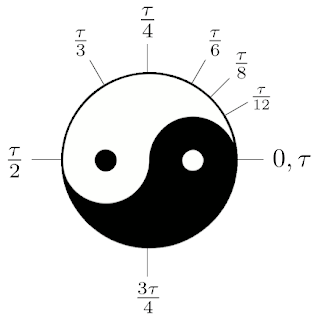 There are, of course, instances where π appears un-doubled. For instance, the formula for area of a circle: A = πr2. Hartl shows, in a mathematically sophisticated way, that the replacement of π by τ even in this instance is the more sound choice, since it is analogous to similar formulas in physics.
An article in today’s BBC News paints the issue as a violent conflict, with pi detractors up in arms over a lifetime of educational betrayal, which seems to this mathematician something of a manufactured controversy. (I can imagine you'd be upset if you are the sort of mathematician that has memorized pi to the nth digit. If you are one of these folks, here's the start for your new parlor trick: reciting tau, 6.283185307...)
There are, of course, instances where π appears un-doubled. For instance, the formula for area of a circle: A = πr2. Hartl shows, in a mathematically sophisticated way, that the replacement of π by τ even in this instance is the more sound choice, since it is analogous to similar formulas in physics.
An article in today’s BBC News paints the issue as a violent conflict, with pi detractors up in arms over a lifetime of educational betrayal, which seems to this mathematician something of a manufactured controversy. (I can imagine you'd be upset if you are the sort of mathematician that has memorized pi to the nth digit. If you are one of these folks, here's the start for your new parlor trick: reciting tau, 6.283185307...)  Is it worthwhile to switch to tau use, an
Is it worthwhile to switch to tau use, an
Blog: Galley Cat (Mediabistro) (Login to Add to MyJacketFlap)
JacketFlap tags: Celebrities, Authors, Trends, controversy, James Patterson, Penguin Press, To Kill a Mockingbird, Oprah Winfrey, documentary, James McBride, Harper Lee, Tom Brokaw, Anna Quindlen, Wally Lamb, 50th Anniversary, Alice Lee, Hey Boo, Marja Mills, Mary McDonagh Murphy, The Mockingbird Next Door: Life With Harper Lee, Add a tag
Filmmaker Mary McDonagh Murphy has created a new documentary about celebrated author Harper Lee entitled Hey, Boo: Harper Lee and To Kill a Mockingbird.
According to Shelf Awareness, the film will feature interviews with Anna Quindlen, Tom Brokaw, James McBride, James Patterson, Wally Lamb, and Oprah Winfrey. Some of those celebrities can be seen in the trailer embedded above.
Initially, the film will have a limited release in New York City and Los Angeles starting May 13th with a nationwide release to follow. Last year, Murphy published Scout, Atticus, and Boo: A Celebration of Fifty Years of To Kill a Mockingbird for the book’s 50th anniversary.
New Career Opportunities Daily: The best jobs in media.
Add a CommentBlog: Confessions of a Bibliovore (Login to Add to MyJacketFlap)
JacketFlap tags: controversy, Add a tag
I feel the need to weigh in on this, or at least to fling it out there. So apparently there's a new study out that says children's books are inherently sexist because of the disparity between female and male heroes. It was conducted at Florida State University and reported in the Daily Mail. Clippage? Don't mind if I do.
Overall, 31 per cent of the best-sellers featured a female lead character, compared to 57 per cent featuring a male. The remainder gave equal weight to a male and female protagonist, or had a gender-neutral character.Hmm. Damning numbers, those. And yet, we've been bewailing the dearth of "boy books" for awhile now.
What to think? I think it's too late at night to be reasonably coherent about this, especially on the same day as a major program (head-to-toe pinata paste here, people. Hot tip: pack extra clothes).
Those of you in the trenches with me (hi!), be my brain. What do you think? Is sexism alive and well in the children's section? And here's more: do you think there are differences between different age levels? Are picture books more or less sexist than chapter books? Are different genres more or less sexist?
Blog: Galley Cat (Mediabistro) (Login to Add to MyJacketFlap)
JacketFlap tags: Authors, memoir, motherhood, Trends, parenting, controversy, Rahna Reiko Rizzuto, Hiroshima in the Morning, Amy Chua, Lylah M. Alphonse, Tiger Mother, Why I Left My Children, Add a tag
In her memoir (Hiroshima in the Morning) and personal essay (“Why I Left My Children“), author Rahna Reiko Rizzuto explained why she left her husband and two sons (ages three and five at the time) to become a part-time parent.
The video embedded above features a Today Show clip with Rizzuto and relationship expert Argie Allen. A recent profile of the author on Shine generated more than 16,000 comments, 360 re-tweets on Twitter, and 75,000 “likes” on Facebook.
What do you think? Here’s an excerpt from the article: “In any case, it’s evident that there’s no one-size-fits-all when it comes to motherhood. But does striking out on your own or being a ‘Hiroshima Mom’ take free-range parenting to an extreme?”
New Career Opportunities Daily: The best jobs in media.
Add a CommentBlog: DRAWN! (Login to Add to MyJacketFlap)
JacketFlap tags: controversy, logo, Olympics, graphic design, Add a tag
2012 Olympic logo irks Iran - World - CBC News:
 Once again, an Olympics graphics controversy…. not my favorite design in any case, “zionist” or not.
Once again, an Olympics graphics controversy…. not my favorite design in any case, “zionist” or not.
Blog: Galley Cat (Mediabistro) (Login to Add to MyJacketFlap)
JacketFlap tags: Christopher Smith, Fifth Avenue, Censorship, controversy, debut novel, Self Publishing, slander, Stieg Larsson, Add a tag
 In October, film critic Christopher Smith (pictured) self-published the thriller, Fifth Avenue. When his book cracked Amazon’s top 10 bestseller list, he faced homophobic insults and death threats in a now-deleted post on an Amazon.com discussion board.
In October, film critic Christopher Smith (pictured) self-published the thriller, Fifth Avenue. When his book cracked Amazon’s top 10 bestseller list, he faced homophobic insults and death threats in a now-deleted post on an Amazon.com discussion board.
We caught up with Smith to talk about the controversy. Our interview follows below…
Q: Did you expect to deal with controversy when you put Fifth Avenue out there?
A: I did ask friends about a few specific scenes in the book and wondered if I should censor myself from telling the truth in those scenes. I don’t believe in censorship, so I decided not to self-censor, especially after reading Stieg Larsson‘s books, which can be brutal.
New Career Opportunities Daily: The best jobs in media.
Add a CommentBlog: 100 Scope Notes (Login to Add to MyJacketFlap)
JacketFlap tags: Kid's Books, Children's Books, Articles, controversy, Featured, Add a tag
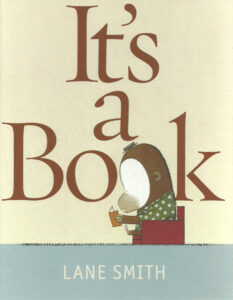
I have an uncanny ability (see also: curse) to agree with both sides of an argument. Although I am an avid fan of sports programs where everyone yells their hastily-formed, yet brazenly unwavering opinions at each other, I personally try to avoid blowhard-ism at all costs. I try to see both sides.
Which is why I’ve waited to say anything about It’s a Book by Lane Smith, which has been stirring up a bit of controversy lately for its use of the word “Jackass”.
School Library Journal recently published a story describing the book and the hubbub surrounding it. Interesting stuff. Click the image below to read it.
Part of the reason I didn’t feel the need to chime in earlier is because others were covering the topic pretty well.
I agree with Philip Nel’s assertion that Smith’s word choice isn’t simply an “easy” joke.
I concur with What Adrienne Thinks About That’s belief that those who don’t like the book shouldn’t bother those who do.
I’m with MotherReader, who expressed that reading the conclusion with youngsters causes a certain level of discomfort.
I can’t argue with A Chair, a Fireplace & A Tea Cozy and Kids Lit who both say that the themes of It’s a Book make it better suited for readers who are older than the standard picture book audience.
So what do I think? I look at it from an elementary school librarian’s perspective. While I’ll certainly have this book around, I don’t see myself reading it aloud to a group. Am I a prude? Maybe. But I also am not a fan of using what is, in many families, an off-limits word in a group setting. Should the book be in libraries? Yes. Would I read it to my child? No question. And while I’m with Kirkus Reviews in calling the use of the word in question a bit “gratuitus”, there’s no real harm done here.
What say you?
Blog: Walking In Public (Login to Add to MyJacketFlap)
JacketFlap tags: harry potter, censorship, philip pullman, maurice sendak, controversy, anne frank, to kill a mockingbird, in the night kitchen, banned books week, thongs, speak loudly, full-frontal snogging, angus, interracial rabbits, Add a tag
When I have children, these will be among the best books on their shelf, but people around the country have found them much more controversial. So instead of saying “why not”, here’s WHY they are so great:
1. And Tango Makes Three by Justin Richardson and Peter Parnell / The adorable true story of two male penguins in Central Park who, with the help of the zookeeper, hatch a beautiful baby daughter. While one of the most challenged books in 2008-2009, this may be my favorite story about a “modern family”.
 2. Speak by Laurie Halse Anderson / Victims should never be blamed or silenced, and anyone that sees rape as pornographic is severely disturbed. I was appalled at how Anderson’s novel was targeted last week. Teens should be encouraged to #SpeakLoudly… and they can get the courage to do so from this book.
2. Speak by Laurie Halse Anderson / Victims should never be blamed or silenced, and anyone that sees rape as pornographic is severely disturbed. I was appalled at how Anderson’s novel was targeted last week. Teens should be encouraged to #SpeakLoudly… and they can get the courage to do so from this book.
3. The Harry Potter series by J.K. Rowling / Obviously. Since I am the kind of person that labelled myself as a “Christian witch” when I was 12.
 4. Merriam-Webster Collegiate Dictionary / If kids are reading the dictionary (even if it’s to look up the definition of “oral sex”), the only consequence is that they’ll probably do better on the SATs. Also, if your children have to look up what sex means, you probably need to work on your parenting skills.
4. Merriam-Webster Collegiate Dictionary / If kids are reading the dictionary (even if it’s to look up the definition of “oral sex”), the only consequence is that they’ll probably do better on the SATs. Also, if your children have to look up what sex means, you probably need to work on your parenting skills.
 5. Angus, Thongs and Full-Frontal Snogging by Louise Rennison / Ooh muttis and vatis may have a nervy spaz because Georgia’s diary contains gorgy sex gods, but if you cannot grasp the hilariosity, you are probably a wet tosser and in need of a duffing up. Now let’s go down the disco!
5. Angus, Thongs and Full-Frontal Snogging by Louise Rennison / Ooh muttis and vatis may have a nervy spaz because Georgia’s diary contains gorgy sex gods, but if you cannot grasp the hilariosity, you are probably a wet tosser and in need of a duffing up. Now let’s go down the disco!
5 Comments on The Top 10 Banned Books I’ll Make Sure Kids Read, last added: 10/2/2010
View Next 25 Posts



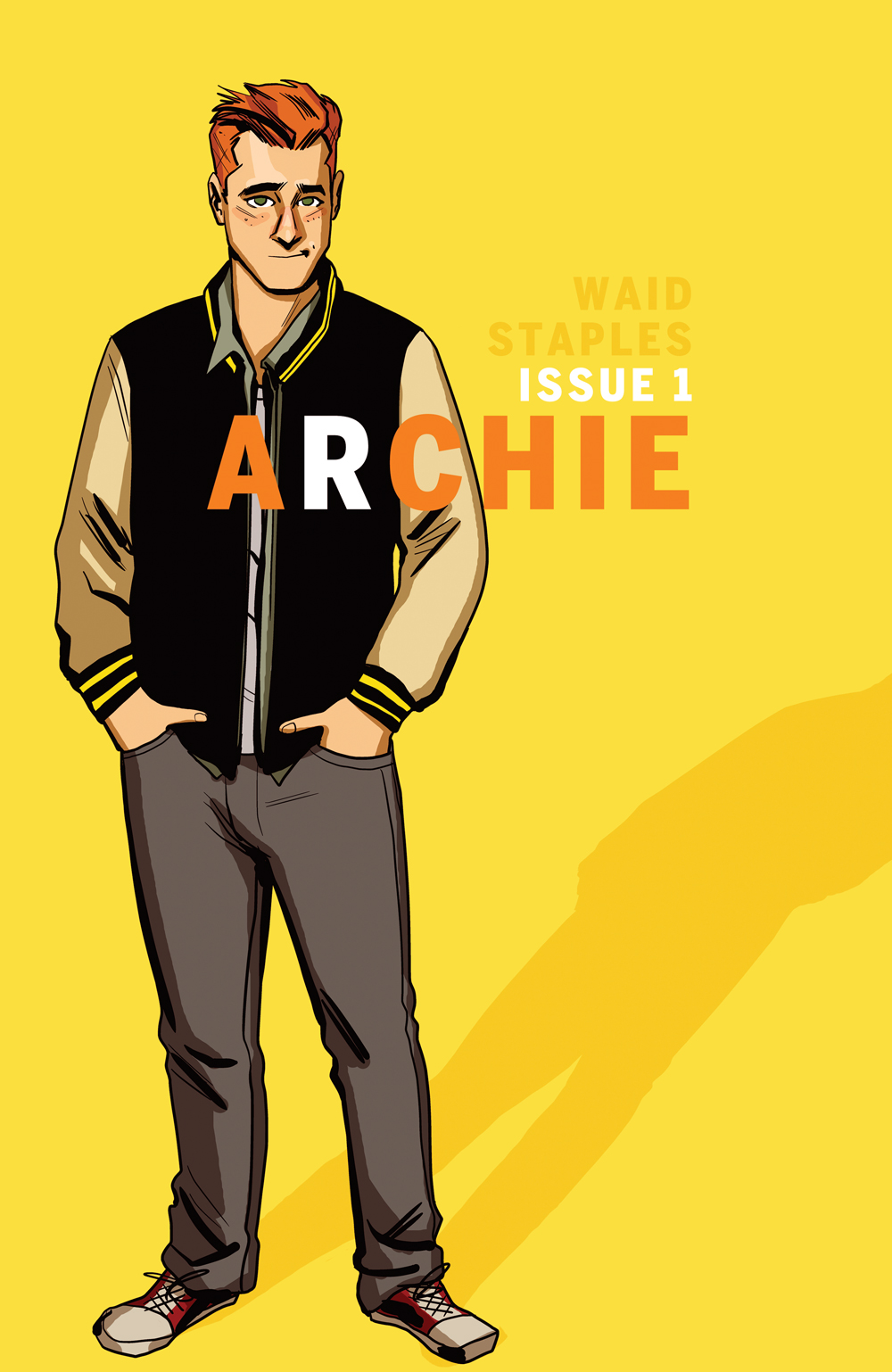
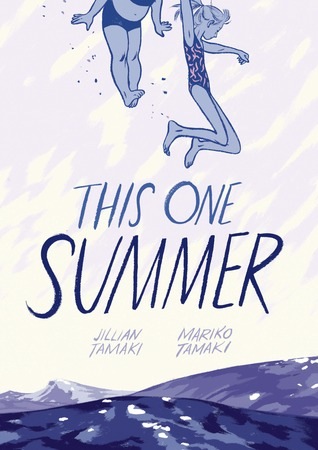

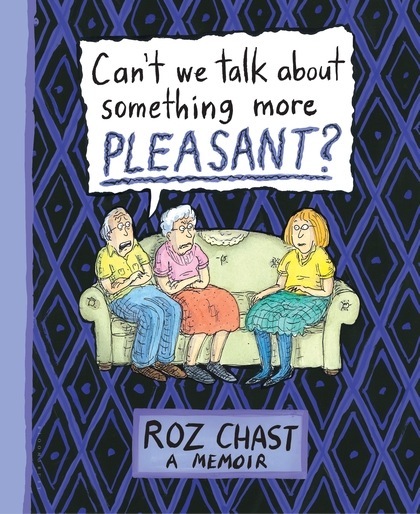
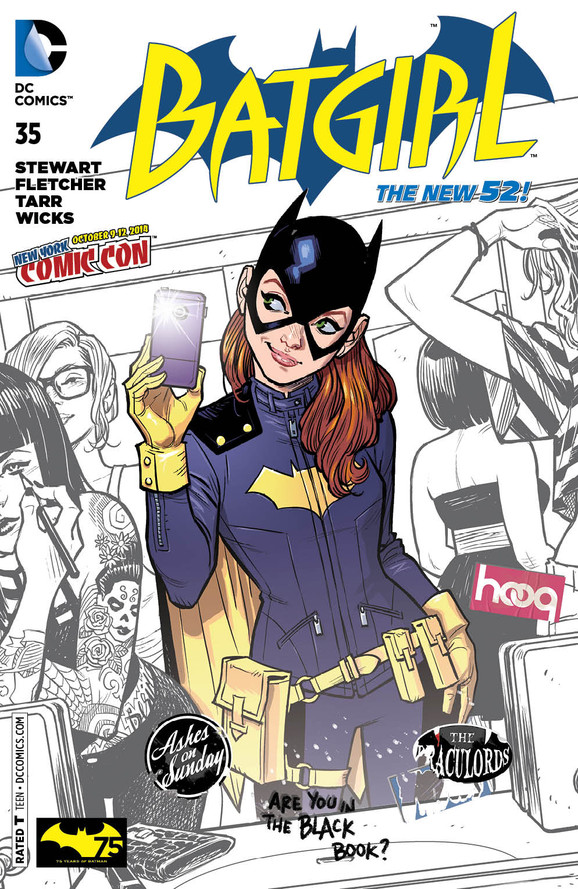




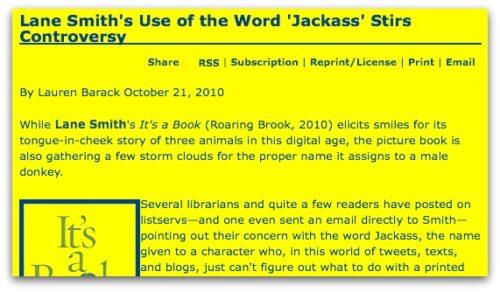
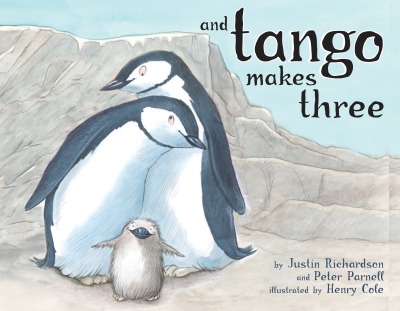
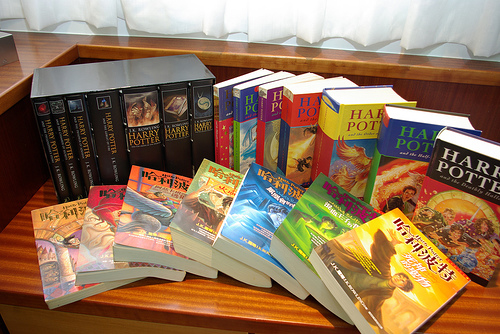
I don’t think even Dave Gibbons, who generally seems to be pretty chill about Watchmen, would go along with this. That’s probably why they didn’t ask him. They didn’t think they’d get his blessing and didn’t care if he opposed it.
I wonder if they’re going to actually use the Watchmen characters, perhaps instead using some of the storytelling motifs and using the Charlton characters they were based on….
*Note – I have only read Rebirth #1 at this stage so don’t beat me up because I haven’t read a DC comic in years. :-)
Either DC knew he’d say no, or they don’t care what he thinks. Says it all really.
All you fanboys happy about defending ‘Before Watchmen’ now, are you?
Since Dave Gibbons doesn’t own the Watchmen characters, There isn’t any necessity to ask his blessing or permission. It would have been a courtesy, but entertainment conglomerates are not usually big on courtesy. Does anyone seriously think that it would have stopped Geoff Johns and DC from going in this direction if they’d asked and Mr. Gibbons had told them it was a bad idea and nothing he could endorse? If it’s not something that readers can get behind, then those readers needn’t buy it. Those who don’t have a problem with it: enjoy what could turn out to be a pretty good story.
Gibbons has style.
Not his characters. Who gives a flying fruck.
I’m with Sean and Skottie. Who gives a shit about creators? We like comics. Comics are put out by corporate executives and lawyers who make contracts and sell merchandise. Writers and artists just think up ideas and write them down and draw them. Big deal! Comics readers are into contracts and legal ownership and plastic toys made in Indonesia. The creative people don’t matter!.
Does Dave Gibbons own the characters? If the answer is “no,” and they were products of “work for hire” and belong to DC, why would DC check with him first? Grow up.
[…] Well, in an interview during MCM London Comic Con recently, several reporters asked Gibbons about the fact that Dr. Manhattan was going to be a part of the actual DC Universe, and an adversary at that. He then told the reporters “no comment,” and when a follow-up question asked if DC had even sent him an email about using Dr. Manhattan, he replied, “No, they didn’t.” Time to make some calls, DC. You already have one Watchmen co-creator hating on you…you don’t want two. [Comics Beat] […]
Kevin, I agree completely! The legacy of a literary classic shouldn’t be decided by the people who made it! It should be decided by the people who took over the jobs of other people who came out ahead in a legal negotiation twenty-five years ago! That’s why we’re all still reading the J.B. Lippincott Company’s To Kill a Mockingbird and Random House’s Ulysses. It’s why J.K. Rowling has never been consulted in the use and exploitation of that Harry Potter bloke! The business of comics is exactly the way it should be!